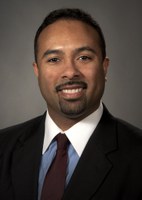 UVA Health System currently has a chief medical officer and a chief information officer. As the Health System’s first chief medical information officer (CMIO), Michael A. Williams, MD, is working to bridge their worlds, providing clinicians with the digital information they need to elevate the quality and safety of patient care.
UVA Health System currently has a chief medical officer and a chief information officer. As the Health System’s first chief medical information officer (CMIO), Michael A. Williams, MD, is working to bridge their worlds, providing clinicians with the digital information they need to elevate the quality and safety of patient care.
You’ve seen medical informatics grow in sophistication while serving as CMIO at the Medical Center of Central Georgia and then as a regional CMIO at the North Shore Long Island Jewish Health System. How has it changed?
When I first started out, there wasn’t a lot of technology that we could call very mature. Today, the market is a mix of mature and emerging products. It’s an exciting time. Part of my job is to be a discerning consumer of informatics. I look at a product and, working together with clinicians, try to determine if this is a path that we should be taking at this moment.
What are the big challenges you’re facing?
Thanks to the penetration of the informatics systems we have in place, especially on the inpatient side, we are collecting an unprecedented amount of patient information. Our ability to use standard reporting and analytic tools to fully realize the potential of this information is hampered by a number of factors. Getting the databases of separate systems to interconnect is still an issue we’re working on. Even within a single system like EpicCare, extensive customization and variations in documentation create conflicts. We’re focusing right now on reaching a common understanding about how we can document information across the Health System to reduce its variability.
We’re also focusing on ergonomic issues, essentially making the system more user friendly. Right now, physicians have to log in repeatedly over the course of a day. We’re working on a project called Tap and Go, which uses RFID (radiofrequency identification) badge readers that authenticate physicians automatically and bring up the records of the patients they are about to see. This should reduce user fatigue and facilitate usage. We hope to start implementing this later in 2015.
Even though your title refers to information technology, this sounds like a people job.
That’s very true. We are all living through a period of unbelievably rapid change in healthcare — and informatics is a major part of that. Many find this to be unsettling. I think the biggest challenge I face is helping our clinicians navigate this process. I try to spend as much time as possible interacting with our physicians, clinical staff and our patient population to get a sense of their day-to-day experiences so we can better meld informatics with their needs and expectations. I think my continued experience as a primary care physician and pediatrician also helps. I regularly work with the technology and software applications that I am asking my colleagues to use.
How does the work you’re doing impact referring physicians?
UVA is part of a five-institution CMS Innovation grant to leverage electronic health records (EHRs) to improve care coordination and utilize electronic referrals for consultations and referrals. The hope is that we can better leverage our EHRs to facilitate the conversation between referring physicians and specialists, develop shared criteria for referrals and improve patient access to subspecialty care. Referring physicians will start seeing improvements over the next year.
This sounds like a big job for one person.
Fortunately, I have a great informatics team. We have three associate medical information officers: Jason Lyman, MD; Martha Hellems, MD, and David Ling, MD. It’s impressive for an institution of our size to have four physicians devoted to informatics. We also rely critically on Jamie Hughes, RN, director of Epic Systems, who helps guide us with our options in regard to our EHR, as well as providing us with a general clinical informatics perspective.
Why did you come to UVA?
I thought the timing was right. There has been a generational change in the leadership structure here — a re-envisioning of the Health System’s aspirations — and a concerted effort to better incorporate academic and medical faculty into the transition. There is a real commitment not only to being a top-notch institution for informatics, but also to taking the steps needed to become a leading accountable care organization. I wanted to be part of this change.